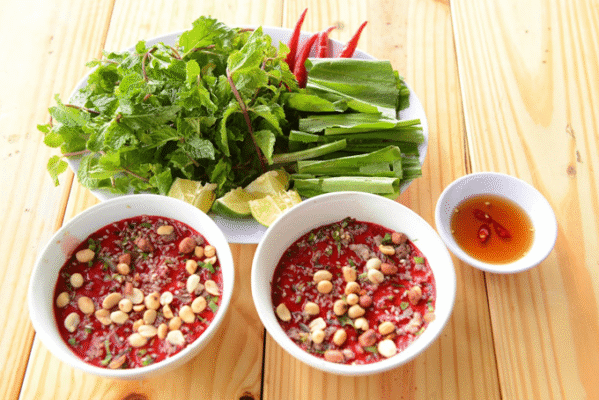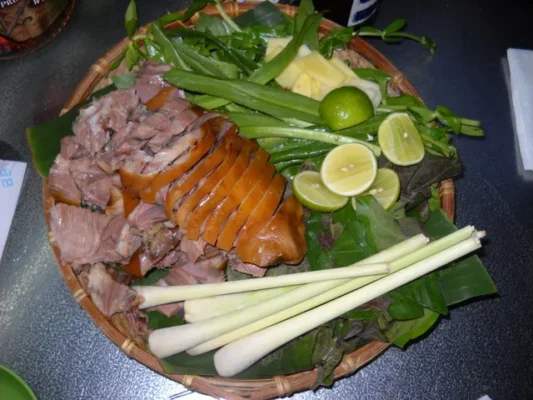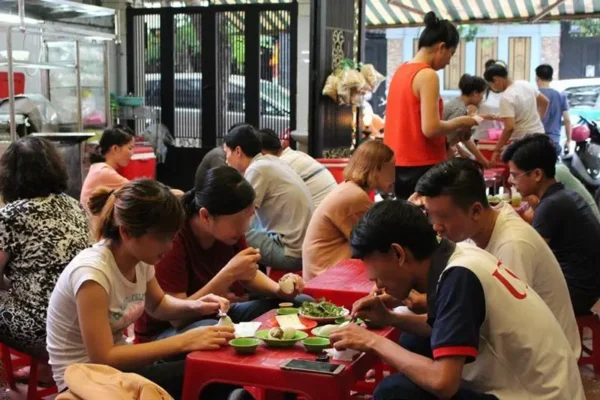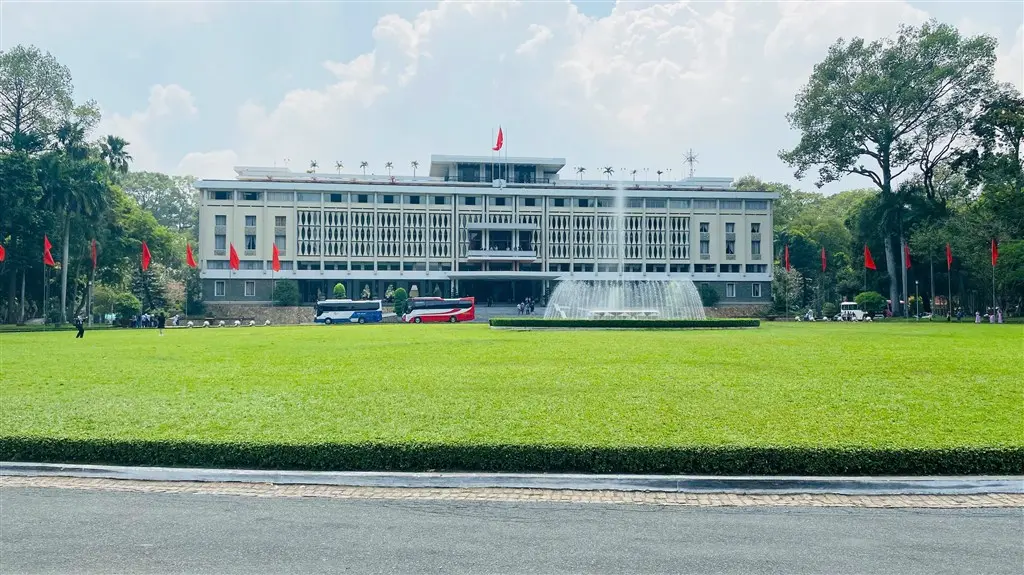Welcome, adventurous eater! EssentialVietNamtravel.com is here to guide you through the more unconventional side of Vietnamese cuisine. The term “weird Vietnamese food” often surfaces when travelers recount their culinary journeys. What one culture deems unusual, another embraces as a delicacy or a staple. Vietnam, a country with a rich and diverse food landscape, offers many dishes that might challenge the palate of a visitor.
This is not about shock value. It is about understanding a food culture shaped by history, geography, and resourcefulness. This guide explores these unique Vietnamese dishes, explains their context, and tells you where you might find them. Prepare for a journey into strange Vietnamese eats that form a fascinating part of Asian cuisine and global street food. This is an exploration for those interested in culinary tourism and exotic foods.
Ready for Your Own Vietnamese Food Adventure?
Planning a trip to explore Vietnam’s unique culinary landscape? Find the best flight deals and transportation options to kickstart your journey!
Exploring Vietnam’s Most Unique Vietnamese Dishes: Balut, Tiet Canh, Duong dua, and More Strange Eats

Many travelers seek to find specific weird Vietnamese dishes. Vietnam offers several iconic items that often top the list of the weirdest food in Vietnam. These dishes provide a true taste of local life and culinary traditions, moving beyond familiar Vietnamese dishes.
First, consider Balut (Trung vit lon). This is a fertilized duck egg, incubated for a period, typically 17 to 21 days. The embryo inside is partially developed. To eat Balut, the egg is boiled. Diners crack the top, sip the savory broth, then consume the yolk and the developing embryo. Common accompaniments include Vietnamese coriander (rau răm), salt, pepper, and lime juice. The texture varies: the yolk is rich, the embryo offers a slight chewiness, and the broth is flavorful.
Balut is a common street food, often sold by vendors in the evenings. Many Vietnamese people believe it is nutritious and provides strength. Its perception as an exotic food for outsiders contrasts with its everyday status for locals. The main ingredient, a fertilized duck egg, makes it one of the most recognized unique Vietnamese dishes.
Next is Tiet Canh (Blood Pudding). This dish is a type of congealed raw blood, most commonly from ducks or pigs. The fresh animal blood is collected into a shallow dish. It is mixed with a small amount of fish sauce or salted water to prevent premature coagulation, then combined with cooked minced meat (like duck gizzards or pork), crushed peanuts, and chopped herbs like rau ram and mint. The mixture is left to set, forming a gelatinous, jelly-like cake.
Tiet Canh is eaten cool. It has a savory, slightly metallic taste, and the texture is soft and wobbly, punctuated by the crunch of peanuts and meat. This dish is often consumed during special gatherings or as a perceived fortifying meal. CRITICAL WARNING: EssentialVietNamtravel.com must advise extreme caution regarding Tiet canh. Consuming raw blood carries significant health risks, including bacterial infections and parasites.
While a part of the local culinary tradition, its consumption is not recommended for travelers unfamiliar with its preparation or potential dangers. The perception of this dish is certainly exotic, and its main ingredient is raw blood.
Another notable strange Vietnamese eat is Duong dua (Coconut Worms). These are the larvae of the Red Palm Weevil, a type of beetle that infests coconut trees. Found primarily in the Mekong Delta region, these plump, white worms are considered a delicacy. A common way to consume Duong dua is live: the wriggling worms are dipped into a bowl of spicy fish sauce (nuoc mam) and eaten whole. They can also be grilled, fried, or put into rice porridge.
When eaten live, they are said to have a creamy, milky texture and a sweet, slightly fatty taste, similar to coconut milk. The Vietnamese name for this dish is Duong Dua. For adventurous food Vietnam explorers, this is often a highlight. These insects represent a category of food that is unusual to many Western palates.
These examples represent just a starting point for those wishing to discover a list of weird Vietnamese foods. Each offers a unique sensory experience and a glimpse into the diverse ingredient use within Vietnamese cuisine. These are unconventional ingredients for many, often possessing strong flavors and representing a local specialty.
Uncovering More Bizarre Vietnamese Cuisine: De Men, Dog Meat, Ruou Ran, and Oc Heo

Beyond the well-known Balut and Tiet Canh, Vietnam’s culinary landscape offers other dishes that fall under the umbrella of bizarre Vietnamese cuisine. These items often involve insects, specific animal parts, or unique preparation methods, contributing to the list of weird food Vietnam is known for among adventurous eaters.
De Men (Crickets) are a popular food, especially as a snack to accompany beer. These insects are typically farm-raised or caught in the wild. The common preparation involves deep-frying or roasting the crickets until crispy. They are often seasoned with salt, chili, lemongrass, or garlic. The texture is crunchy, and the taste is often described as nutty or earthy, somewhat similar to roasted nuts or popcorn.
Eating insects is quite common in Vietnamese food culture in certain contexts, and crickets are one of the more approachable options for those curious about entomophagy. This food category, insect, is prepared fried and is a part of Vietnam’s cuisine.
A more controversial item is Thit cho (Dog Meat). The consumption of dog meat is a sensitive topic with significant ethical considerations and is not widespread across all of Vietnam, though it persists in some areas and among certain groups. It is often consumed in specific restaurants, particularly in northern regions like Hanoi, and is sometimes associated with perceived properties like increasing male virility or providing warmth in colder months.
Dog meat can be prepared in various ways: stewed, grilled, or steamed. CRITICAL ADVICE: EssentialVietNamtravel.com acknowledges the cultural complexities surrounding dog meat. However, due to ethical concerns raised by animal welfare organizations globally and the declining acceptance within Vietnam itself, we do not encourage its consumption. Travelers should be aware of the controversy and make informed personal decisions. This dish, with its main ingredient of dog, is certainly salient for its divisive nature.
Ruou Ran (Snake Wine) is another distinctive offering. This beverage involves steeping whole snakes, often venomous ones like cobras, in rice wine or grain alcohol. Sometimes, other animals like scorpions or geckos, or various herbs, are added to the brew. The belief is that the snake’s essence and venom (denatured by the ethanol) impart medicinal properties to the wine, thought to cure various ailments or enhance vitality. Snake wine is typically consumed in small shots. The visual of a coiled snake in a bottle is striking. While the base is rice wine, the addition of a snake makes this beverage highly unusual.
Finally, Oc Heo (Pig Brain) is a dish that utilizes animal organs, reflecting a nose-to-tail eating philosophy. Pig brain is often steamed, sometimes inside a young coconut or in a small bowl with herbs like Ngai Cuu (mugwort). The texture is very soft, creamy, and custard-like. The taste is mild, often taking on the flavors of the accompanying herbs or broth. It is believed by some to be good for intelligence. This ingredient source, animal organs, makes it a characteristic, unusual food.
These dishes further illustrate the range of ingredients and cultural practices that contribute to the perception of weird vietnamese food. They challenge conventional Western culinary norms and offer a deeper, sometimes uncomfortable, look into local traditions.
Where to Find These Adventurous Vietnamese Foods: A Guide to Eating in Hanoi and Other Regions
Locating authentic weird Vietnamese street food and other unique dishes is part of the adventure for those exploring Vietnamese cuisine. While some items are widespread, others are regional specialties. EssentialVietNamtravel.com provides this guide to help you navigate.
Planning your food exploration trip?
Ensure you have the best travel arrangements to reach these culinary hotspots.
Hanoi: The capital city, Hanoi, is a hub for street food. For Balut (trung vit lon), look for street vendors in the evenings, especially around popular eating areas in the Old Quarter or near Hoan Kiem Lake. These vendors often have small signs and a pile of eggs. Tiet Canh is harder to find openly in tourist areas due to its nature; it’s more common in local markets on the city outskirts or specific, traditional restaurants that cater to locals.
Be extremely cautious. Oc Heo can sometimes be found at stalls selling chao (rice porridge) or tan (herbal stew) dishes. Some specialized restaurants might also offer it. When exploring Hanoi food, asking locals (if there’s no language barrier) or a trusted local guide can be invaluable.
Ho Chi Minh City (Saigon): Similar to Hanoi, Ho Chi Minh City has a vibrant street food scene. Balut is readily available from street vendors. For more exotic items like De men (crickets) or other fried insects, you might find them at night markets or specific “nhau” (drinking) spots where they are served as snacks. Saigon cuisine is diverse; some specialty restaurants may feature a wider array of unusual dishes, including versions of pha lau (offal stew) that might seem adventurous.
Mekong Delta: This southern region is particularly known for its unique local specialties reflecting its riverine environment. This is where you are most likely to encounter duong dua (coconut worms). Local markets in cities like Can Tho or My Tho might have vendors selling them, or they might be offered at homestays or restaurants specializing in Mekong Delta delicacies. Field rats (chuot dong), another regional specialty, are also found here, often grilled or roasted.
General Tips for Finding and Trying:
- Local Markets: These are often the best places to see raw ingredients and find vendors preparing local dishes. Early mornings are usually busiest.
- Street Food Stalls: Observe. A busy stall with a high turnover of local customers is generally a good sign for freshness and quality.
- Ask Locals (with caution): If you have a local guide or can communicate, they can be the best resource. However, be mindful that “weird” is subjective, and some locals might not understand why you’re seeking specific items.
- Specialty Restaurants: Some restaurants, especially those catering to a local clientele interested in “exotic” fare, will list these items.
- Vietnam Travel Blogs and Food Tours: Many food bloggers and tour operators focus on adventurous food Vietnam experiences and can provide specific, up-to-date locations. These can be a good resource for a safe to eat weird Vietnamese food guide, though always use your judgment.
Remember, the availability of certain weirdest food challenges in Vietnam for tourists can be seasonal or hyper-regional. Patience and an adventurous spirit are key.
The Cultural Significance of Vietnam’s Exotic Vietnamese Delicacies
Understanding why certain strange Vietnamese eats exist requires looking beyond their appearance or taste. These exotic Vietnamese delicacies are often deeply embedded in Vietnamese culture, history, and local environments. They reflect resourcefulness, regional identity, and long-held beliefs.
One primary factor is resourcefulness and nose-to-tail eating. Historically, especially in times of hardship (which could include periods like the Vietnam War, influencing food origins), making use of every available food source was crucial. This philosophy means that parts of animals or types of creatures that might be discarded elsewhere are valued ingredients in Vietnamese cuisine. Dishes like Oc Heo (pig brain) or Pha Lau (offal stew) exemplify this. This approach is not unique to Vietnam but is a strong characteristic of its culinary traditions.
Regional availability and local specialty also play a significant role. The Mekong Delta, with its abundance of coconut trees, naturally became the place where Duong Dua (coconut worms) are a known, if unusual, food. Similarly, mountainous regions might have different insects or wild game as part of their diet. These dishes become markers of regional identity. If a local delicacy, then it is culturally ingrained.
Beliefs and traditions are another powerful driver. Many unconventional ingredients are consumed due to perceived health benefits or medicinal claims. Ruou Ran (snake wine) is a prime example, believed to enhance vitality. Balut is often eaten for strength. Some dishes, through ritualistic preparation, may be associated with specific ceremonies or times of the year. These beliefs, whether scientifically proven or not, contribute to the cultural significance and persistence of these foods.
The concept of acquired taste is also relevant. Foods with strong flavors or unexpected textures might be challenging for outsiders, but for those who grow up with them, they are familiar and even craved. The pungent aroma of some fermented sauces, like Mam Tom (fermented shrimp paste) – a condiment rather than a standalone “weird food” but often challenging for newcomers – is an example. Sharing these foods within a community reinforces cultural bonds.
Finally, some of these dishes are part of culinary traditions passed down through generations. They are not fleeting trends but have a history. While modern influences and changing tastes might affect their popularity, they remain a part of Vietnam’s rich gastronomic heritage. Understanding this cultural context helps transform the perception of “weird” into an appreciation for diversity and ingenuity within Asian cuisine. The cultural aspect is paramount to understanding why these dishes persist.
Tips for Trying Strange Vietnamese Eats: Embracing the Culinary Adventure

Approaching weird vietnamese food requires an open mind and a sense of adventure. EssentialVietNamtravel.com offers these tips to make your exploration of unique Vietnamese dishes more enjoyable and safe. This is about food adventurousness and creating memorable experiences.
Prepare Your Mindset:
- “Weird” is Culturally Relative: What seems strange to you might be a comfort food or delicacy to someone else. Approach with respect and curiosity, not judgment.
- Manage Expectations: You might not enjoy every dish, and that is perfectly fine. The experience is about trying.
- Embrace the Adventure: See this as a unique opportunity for culinary tourism, a chance to step outside your comfort zone. Many adventurous eaters seek novel experiences for this reason.
Practical Steps for Trying:
- Start Small: If you are hesitant about a particular dish, try a small portion first. Don’t feel pressured to finish everything.
- Go with a Local or a Guide: If possible, have a trusted Vietnamese friend or a reputable food tour guide introduce you to these dishes. They can explain the food, ensure it’s from a good source, and show you the proper way to eat it. This is often the best approach for a safe to eat weird Vietnamese food guide.
- Observe Locals: See how local people eat the dish. What condiments do they use? What is the typical serving size? This can enhance your experience.
- Ask About Ingredients (if possible): If you have allergies or strong dietary restrictions, try to inquire about the main components. Basic Vietnamese food phrases can be helpful, or use a translation app.
- Hygiene is Key:
- Street Food: Choose vendors who are busy with local customers. Look for signs of cleanliness around the stall. Food should look and smell fresh.
- CRITICAL ADVICE FOR HIGH-RISK ITEMS: For dishes like Tiết Canh (raw blood pudding), the health risks are substantial. EssentialVietNamtravel.com strongly advises extreme caution. If you choose to try such items, understand that you do so at your own risk. Street vendors offer authentic local dishes, but not all are equally safe.
- Pair with Familiar Drinks: Having a local beer (bia hơi) or iced tea (tra da) can be a good accompaniment and a way to cleanse the palate.
- Listen to Your Body: If something doesn’t feel right after eating, or if you have a sensitive stomach, it’s okay to stop.
The sensory experience is a large part of trying strange Vietnamese eats – from pungent aromas to unexpected textures and bold ingredient pairings. If a food has a challenging texture, it is often an acquired taste. Remember, local food reflects local resources, and some traditional foods are unusual to foreigners.
Beyond the “Weird”: Understanding the Full Spectrum of Vietnamese Culinary Traditions
While the allure of weird Vietnamese food draws many curious travelers, it is vital to remember that these dishes represent only one facet of Vietnam’s vast and sophisticated culinary landscape. To truly appreciate Vietnamese cuisine, one must look beyond the “weird” and explore the depth and breadth of its more common, yet equally fascinating, offerings.
Vietnamese cuisine is celebrated globally for its balance of flavors – sweet, sour, salty, bitter, and umami – its fresh ingredients, and its artful use of herbs and spices. Familiar Vietnamese dishes like Pho (noodle soup), Banh mi (baguette sandwich), Goi cuon (fresh spring rolls), and Com Tam (broken rice) are beloved worldwide for good reason. These mainstream global cuisine ambassadors showcase the elegance and deliciousness that define everyday Vietnamese eating. They are far from plain food and offer rich experiences for those who prefer unadventurous meals, though they are anything but boring.
The focus on fresh vegetables, lean proteins, and aromatic broths makes much of common Vietnamese food healthy and appealing. The country’s diverse geography also contributes to regional variations. Northern cuisine is often known for its subtle flavors, Central Vietnamese food for its spiciness and intricate presentation, and Southern cooking for its sweeter profiles and influence from neighboring culinary traditions.
Exploring these more conventional dishes provides essential context. It shows that the resourcefulness leading to “weird” dishes coexists with a refined culinary artistry. Nuoc mam (fish sauce), a fundamental condiment, demonstrates complex fermentation, a characteristic also found in some unusual foods, but here it forms the backbone of countless delicious, everyday meals.
EssentialVietNamtravel.com encourages every visitor to Vietnam to be adventurous. Try the Balut if you dare, sample the Dế Mèn if you are curious. But also, take the time to savor a perfectly prepared bowl of Pho in Hanoi, enjoy crispy Banh xeo in Ho Chi Minh City, and discover the delicate flavors of Cao Lau in Hoi An. Understanding the full spectrum – from the challenging to the comforting – allows for a richer appreciation of Vietnamese people and their incredible food culture. The culinary aspect of Vietnamese travel is one of its greatest rewards, offering endless opportunities for discovery.
Further Reading: Explore More Vietnamese Culinary Delights
- A Guide to Vietnamese Noodle Dishes Beyond Pho (https://essentialvietnamtravel.com/2025/04/22/vietnamese-food-noodles/)
- Sweet Endings: An Introduction to Vietnamese Desserts (https://essentialvietnamtravel.com/2025/04/26/vietnamese-desserts/)
- Understanding the Tradition of Vietnamese Mooncakes (https://essentialvietnamtravel.com/2025/05/04/essential-vietnam-travel-vietnamese-mooncake-guide/)


